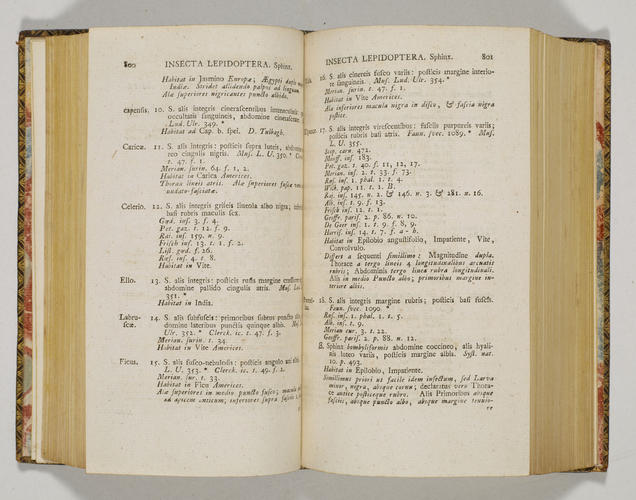-
1 of 253523 objects
Systema naturae per regna tria naturae ; vol. 1 part 2 1766
RCIN 1055322

Carl Linnaeus (1707-78)
Systema naturae per regna tria naturae; secundum classes, ordines, genera, species, cum characteribus. . . ; v. 1 pt 2 / Carolus Linnaeus 1766
-
While completing his studies in Amsterdam in 1735, the Swedish naturalist Carl Linnaeus began publishing his ideas on the classification of the natural world. The first edition of his Systema Naturae, a treatise which would eventually revolutionise the study of nature consisted only 12 pages containing three tables that listed his new names for plants, animals and minerals. Over the next three decades and through a further eleven editions, Linnaeus continued to revise and expand his system.
Linnaeus’s great innovation was the creation of a five-tier hierarchy and binomial (two-term) nomenclature. The hierarchy was the main classification, or taxonomy, and consisted of kingdoms (Linnaeus used plant, animal and mineral); divided into class (24 for plants, six for animals and four for minerals); then order, genus and species. The binomial naming system was intended to provide a common scientific name within this hierarchy that could be used to identify different species. It was made up of the general name and a more specific aspect. Linnaeus, for example, realised that dogs and wolves were related, assigning them both to the genus Canis (canines), but also that they were separate species. To distinguish the two, he named dogs Canis familiaris (domestic canines) and grey wolves, Canis lupus (‘lupus’ being the Latin word for wolf).
The new system, which by the 10th edition of 1758 contained thousands of species, was welcomed by many in the natural sciences with naturalists across Europe enthusiastically adopting it, gradually replacing longstanding scientific names with Linnaean counterparts. By this 12th edition of 1766-8, the last published in Linnaeus’s lifetime, some 12,000 plant and animal species had been named.
The new system was intended to serve only as a stop-gap to simplify taxonomy until a more comprehensive method was devised. Errors, such as unrelated species often being grouped together due to their sharing similar characteristics eventually led to criticism from later naturalists. These discrepancies were most prevalent in Linnaeus’s systems for minerals, which soon fell out of favour altogether and plants, for which a more accurate system was subsequently devised by the French botanist Antoine Laurent de Jussieu in 1788. The introduction of binomial nomenclature was very influential, however, and continues to be used, albeit in greatly modified forms, to this day.
Carl Linnaeus held problematic views against different nationalities and ethnic groups, principally those from outside Europe. The Systema Naturae contained a section classifying people and Linnaeus justified his groupings via the use of derogatory terms and descriptions of perceived ‘inferior’ characteristics. Such was his standing in the scientific world of the mid-eighteenth century, these views may have influenced others to adopt similar ideas.
Provenance
From the library of George III at Kew Palace
-
Creator(s)
(publisher)(series) -
Alternative title(s)
Systema naturae per regna tria naturae; secundum classes, ordines, genera, species, cum characteribus... ; v. 1 pt 2 / Carolus Linnaeus.